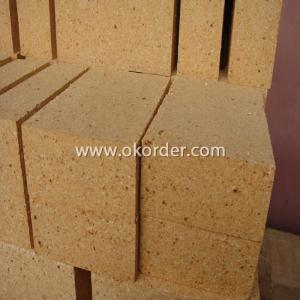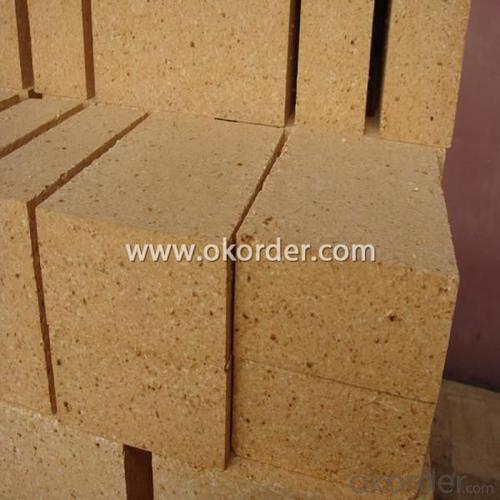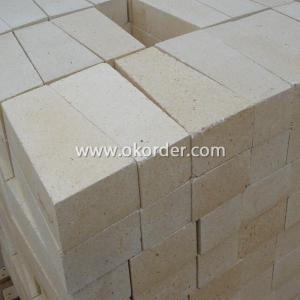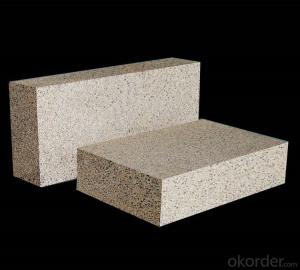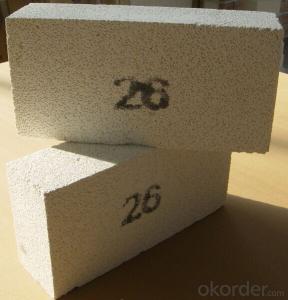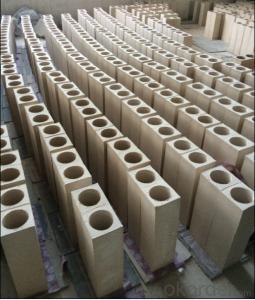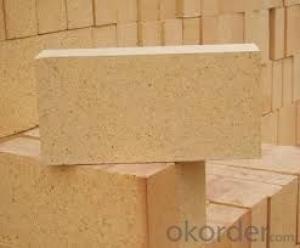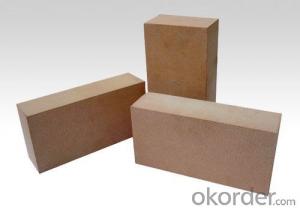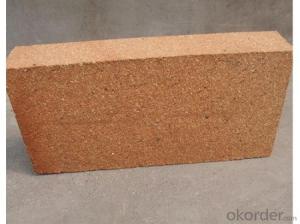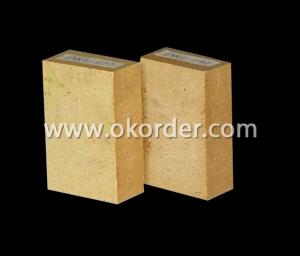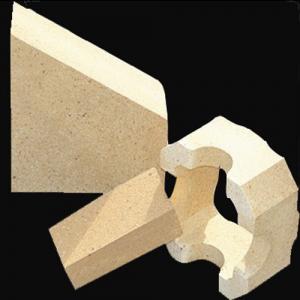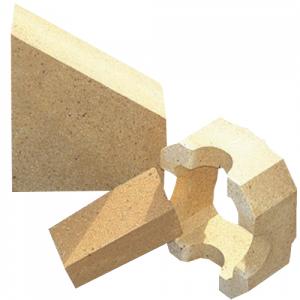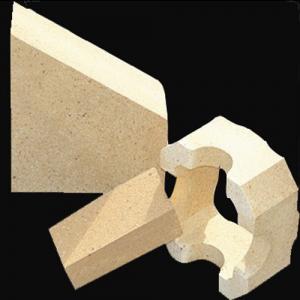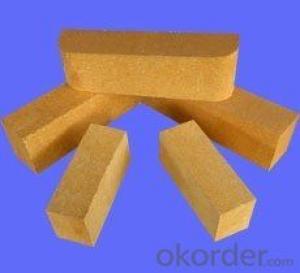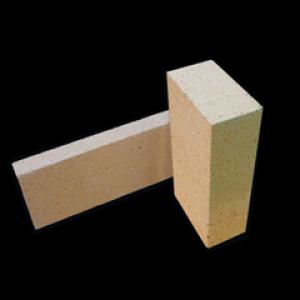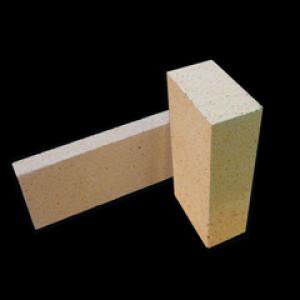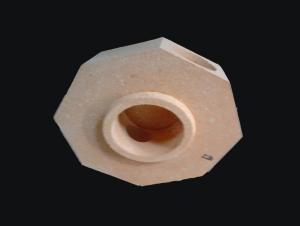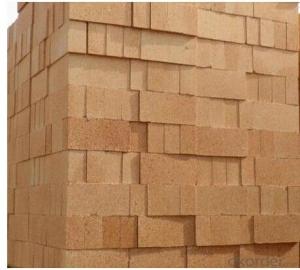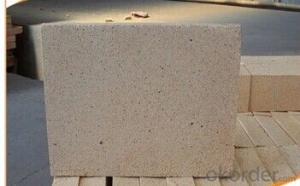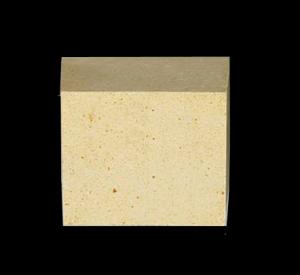Fireclay Brick DN10 Low Porosity
- Loading Port:
- China Main Port
- Payment Terms:
- TT or L/C
- Min Order Qty:
- 5 ton m.t
- Supply Capability:
- 1000 Tons Per Month m.t/month
OKorder Service Pledge
OKorder Financial Service
You Might Also Like
General Information of Low Porosity Fireclay Brick DN10
Our corporation produces a comprehensive range of Low Porosity Fireclay bricks, with 30% to 55% alumina content, all of these bricks exhibit excellent performance.
Our Low Porosity Fireclay bricks are the final result of blending excellent calcined flint clay and calcined bauxite, with cutting-edge technology, adding superfine powder, after mixing, drying, forming, in the high temperature shuttle kiln. We ensure you that the Fireclay Bricks made by us possess high quality standard and have gone through all the complicated quality control parameters. Their durability and strength adds life to the structure and they have the capacity of bearing high temperature.
Technical Data of Low Porosity Fireclay Brick DN10 | ||
Physical Properties: | ||
Refractoriness | ℃ | 1750 |
Permanent Linear Change(1450℃×2h)% | % | -0.1~0.5 |
Apparent Porosity, % | % | ≤10 |
Cold Crushing Strength | Mpa | ≥70 |
Refractoriness Under Load (T0.6) | ℃ | 1500 |
Thermal Expansion at 1000℃, | % | - |
Density | g/cm3 | ≥2.4 |
Chemical Analysis: |
|
|
Al2O3 | % | ≥45 |
Fe2O3 | % | ≤1 |
Note: | ||
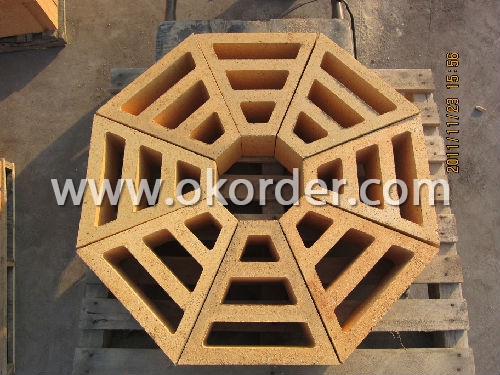
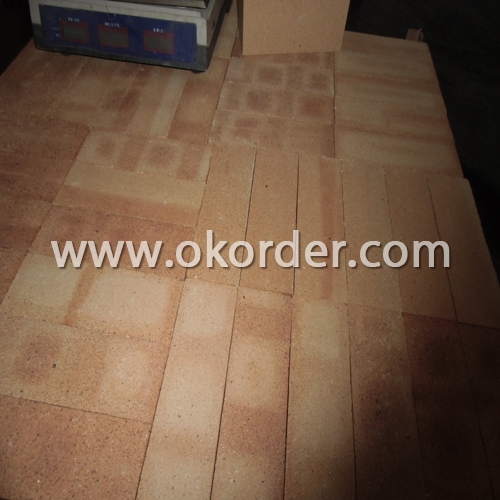
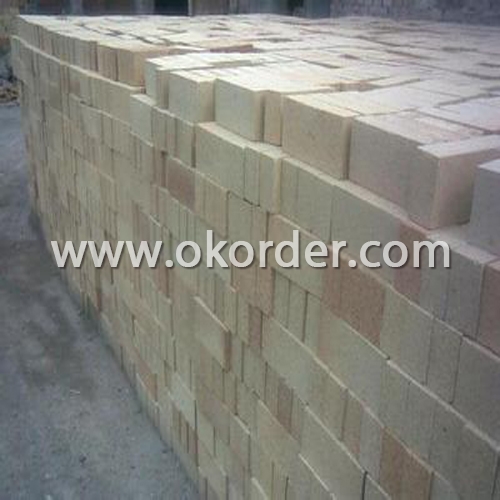
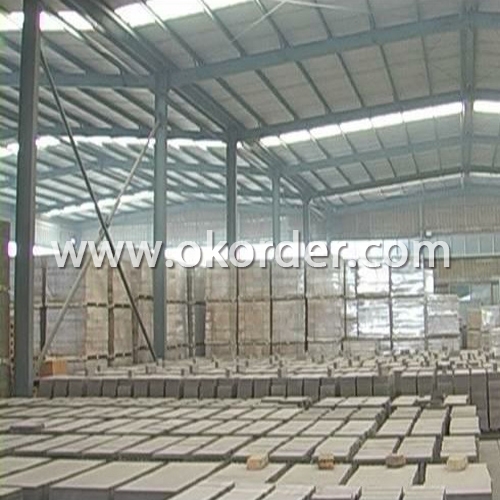
Feature of Low Porosity Fireclay Brick DN10
Resistant to thermal shock, abrasion, chemical attack
High ability for anti-abrasion during work
Low shrinkage degree under high temperature so as to maintaining integrity of the furnace lining
Low apparent porosity, and low Fe2O3 content to reduce the carbon deposit in the blowhole and avoid the bricks broken in case of expansion
Applications of Low Porosity Fireclay Brick DN10
Low Porosity Fireclay Brick DN10 is mainly used in glass furnace.
- Q: What kind of refractory brick is suitable for 24*28m rotary kiln of 5,000 tons?
- Magnesium spinel
- Q: Does circulating fluidized bed boiler's furnace wall use refractory to have thermal insulation?
- Heat insulation cotton is laid behind refractory brick.
- Q: What is the use of refractory bricks
- Silica?brick, common brick, special type brick. For example, fireclay bricks, high alumina brick, fused brick (fused cast brick), unfired brick, refractory materials at high temperature and can withstand a variety of physical and chemical changes and mechanical action with certain shape and size. According to the preparation process, the method can be divided into burnt brick. Can be used as construction furnaces and various thermal equipment of high temperature building materials and construction materials; according to the shape and size, it can be divided into standard bricks, refractory heat insulating bricks, magnesia brick etc.
- Q: What is the size of mechanism brick and general refractory brick?
- The ordinary refractory brick is 230mm long, 53mm thick; red brick is 240mm long, 115mm wide, 65mm thick,
- Q: How to use the firebrick to build crucible furnace? How to calculate its furnace's width and depth?
- 1, classify according to the smelting method : Open-hearth?furnace steel: Including carbon and low-alloy steel. According to the different lining material, there are acidic and basic open hearth steel two types. Converter steel: Including carbon and low-alloy steel. According to different positions of blowing oxygen, there are bottom blowing, side blowing and BOF steel three types. Electric furnace steel: Mainly alloy steel. According to the different types of electric furnace and electric arc nail fixed Li modified cool boat to raise spending whale steel, induction furnace...
- Q: what is application of high alumina refractory brick?
- reverberatory?furnace 1, close to the neutral refractory, but because mullite crystallization has not formed the network organization, so the load softening temperature is not higher than silica?brick. the refractoriness of high alumina brick is higher than fireclay?brick and semi-silica brick, mainly used in blast furnace, nozzle brick,etc. it is up to 1790 C~ 1750, can resistance to acid slag and alkaline slag erosion. hot blast furnace, blast furnace, high alumina brick are widely used for producing open-hearth?furnace regenerative bricks, because it contains SiO2, low impurity content, which belongs to high-grade refractory materials, electric furnace. 2, plug head used in pouring system . In addition. 3, because high aluminum products contains more Al2O3, forming less fusible vitreous body, so the high load softening temperature is higher than clay brick. because rotary kiln lining, slag resistance of high alumina refractory brick contain more Al2O3, so the ability of anti alkaline slag is weaker than anti acid slag. so it has a wide range of application. high alumina refractory brick due to the following performances
- Q: Which is best of refractory brick press machine?
- Rub press machine have been forced out. Without permanent magnet. The electric screw press machine is suitable for the forming of refractory bricks. Use Kehui switch reluctance to servo motor to drive electric screw press machine, have the ability of high quality electric screw press machine, no water cooling, high efficiency and energy saving, green and environmental protection.
- Q: Where are clay bricks or cement bricks?
- Cement brick is the use of fly ash, cinder, coal gangue, slag, chemical residue or natural sand, sea mud etc. (more than one or several kinds of raw materials) as the main raw material, made of cement coagulant, a kind of new wall materials by high temperature calcination made called cement brick.
- Q: Why do some people say that clay brick insulation effect is good, and some people say that bad, in the end what is right?
- The heat preservation effect should be taken away from the heat insulation capacity of the material. The ordinary clay brick has small heat capacity and slow heat conduction, so it is more thermal insulation.
Send your message to us
Fireclay Brick DN10 Low Porosity
- Loading Port:
- China Main Port
- Payment Terms:
- TT or L/C
- Min Order Qty:
- 5 ton m.t
- Supply Capability:
- 1000 Tons Per Month m.t/month
OKorder Service Pledge
OKorder Financial Service
Similar products
Hot products
Hot Searches
Related keywords
